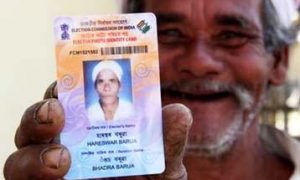Cyclone Biparjoy Update: IMD has issued a red alert for Gujarat, warning of heavy to very heavy rainfall and strong winds in the coastal districts.
Cyclone Biparjoy Update: Cyclone Biparjoy has weakened into a very severe cyclonic storm and is expected to make landfall near Jakhau port in Gujarat’s Kutch district on Thursday evening. The storm is currently located about 250 kilometres from the Gujarat coast and is moving towards the land at a speed of 15 kilometres per hour.
The India Meteorological Department (IMD) has issued a red alert for Gujarat, warning of heavy to very heavy rainfall and strong winds in the coastal districts. The IMD has also issued an orange alert for Rajasthan, warning of heavy rainfall and strong winds in the eastern parts of the state.
Amid this the concerns arise around protection of valuable assets of people like houses, vehicles and crops (for farmers). Apart from government relief that is provided to the affected ones, there are other ways through which people can ensure that the losses are minimised.
To protect your assets during such calamities, you may choose to insure them to get some relief. There are insurance policies available that can provide coverage for natural calamities. These policies fall under the category of property insurance and are typically included as part of comprehensive home insurance or specific natural disaster insurance.
Here are some common types of insurance coverage available;
Home Insurance: Comprehensive home insurance policies often include coverage for damages caused by cyclones, storms, floods, and other natural disasters. This coverage typically extends to the structure of the home as well as the contents inside.
Home insurance is a type of property insurance that covers your home and its contents against damage or loss caused by a variety of perils, such as fire, theft, floods, and earthquakes.
Home insurance policies in India typically include the following coverages:
Building coverage: This coverage protects your home’s structure from damage caused by perils such as fire, windstorm, hail, and lightning.
Contents coverage: This coverage protects your belongings from damage caused by perils such as fire, theft, flood, and earthquake.
Personal liability coverage: This coverage protects you from financial liability if someone is injured on your property.
Home insurance premiums vary depending on a number of factors, such as the value of your home, the type of coverage you choose, and your location. I
t’s important to note that specific coverage and exclusions may vary among insurance providers, so it’s crucial to carefully review the policy terms and conditions before purchasing home insurance in India.
Fire and Special Perils Insurance: This type of insurance covers damages caused by fire, lightning, storms, cyclones, floods, earthquakes, and other specified perils. It provides coverage for both residential and commercial properties.
Crop Insurance: For farmers and agricultural activities, there are crop insurance policies available that cover losses due to cyclones, floods, droughts, and other natural disasters. These policies help farmers recover from financial losses caused by damage to their crops. Pradhan Mantri Fasal Bima Yojana, Comprehensive Crop Insurance Scheme and National Agricultural Insurance Scheme (NAIS) are some examples of such schemes.
Motor Insurance: In case you own a vehicle, motor insurance can help you to mitigate losses. Motor insurance is a type of insurance policy that provides financial protection to vehicle owners against various risks and damages associated with their vehicles.
Also, it is mandatory by law for all vehicles plying on Indian roads to have at least a basic form of motor insurance called Third-Party Liability Insurance. Additionally, vehicle owners can opt for comprehensive motor insurance for enhanced coverage.
Read More: Dearness Allowance hike news: 16% increase in DA rate for these Central Government Employees
-Third-Party Liability Insurance: This is the minimum legal requirement for all vehicles in India. It covers the vehicle owner’s liability for any third-party injury, death, or property damage caused by the insured vehicle. It does not cover damages to the insured vehicle or the policyholder’s own injuries.
-Comprehensive Motor Insurance: This is an optional but highly recommended form of motor insurance in India. It provides coverage for both third-party liability as well as damages to the insured vehicle.
Comprehensive motor insurance typically includes the following:
a. Own Damage Cover: This covers damages to the insured vehicle due to accidents, fire, theft, natural disasters, vandalism, and other perils as mentioned in the policy.
b. Personal Accident Cover: This provides coverage for the policyholder in case of accidental bodily injury, disability, or death while travelling in the insured vehicle. The coverage amount is usually predetermined.
c. Add-On Covers: Insurance providers offer various add-on covers that can be purchased along with the comprehensive policy to enhance the coverage further. These may include zero depreciation cover, engine protection cover, roadside assistance, consumables cover, and more.
It is important to carefully review the terms, coverage limits, exclusions, and conditions of these insurance policies. Additionally, the specific coverage options and availability may vary among insurance providers. It is advisable to consult with insurance agents or companies directly to understand the scope of coverage and choose the most suitable policy for your needs.




































